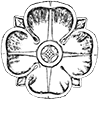Dr. Salomon de Leon became the first person to be laid to rest in the cemetery.
Beth Haim Berg Altena
History
Differences of opinion which found their roots in the early Reform Jewish movements in Europe and in local commercial rivalry led in 1864 to a schism in Congregation Mikvé Israel and to the formation of the Dutch Reform Jewish Community, later to be named Temple Emanu-El. The Reform community urgently needed a new cemetery to bury its members in accordance with the Reform ritual it had adopted and just two months after its founding, Temple Emanu-El bought a parcel of land at what is now Berg Altena and founded there its Beth Haim Berg Altena. About a year later, Dr. Salomon de Leon became the first person to be laid to rest in the cemetery.
Most members of Mikvé Israel began to live near the city around the late 19th century, which led to the Orthodox congregation also needing to have a more convenient location than Bleinheim to bury its deceased. In 1880, Mikvé Israel purchased a plot of land adjoining to the west the Emanu-El cemetery. The first burial on the Orthodox section was of David Meijer, an Ashkenazi Jew, in 1880.
While the new Mikvé Israel Berg Altena cemetery adjoined the Reform cemetery, the congregations ensured it would not be mistaken to be one large Jewish cemetery. A hefty separation wall was built to clearly separate the Reform and Orthodox cemeteries. Divided they were and divided they would remain until 1958. That is when the dividing wall between the cemeteries was demolished, and the two cemeteries became one. The foundation of the dividing wall remains as a visible testament of the erstwhile separate Orthodox and Reform burial grounds.
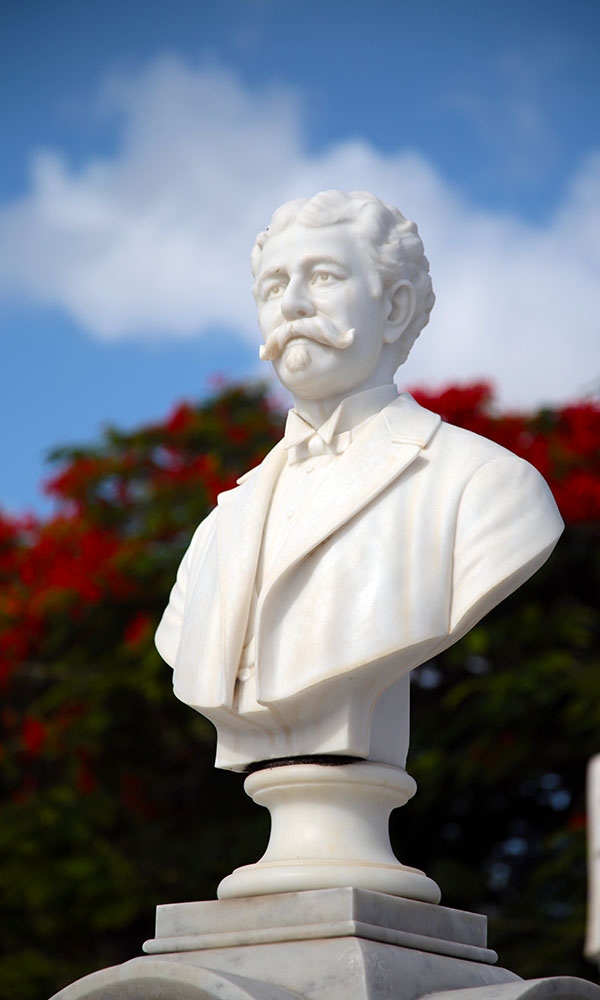
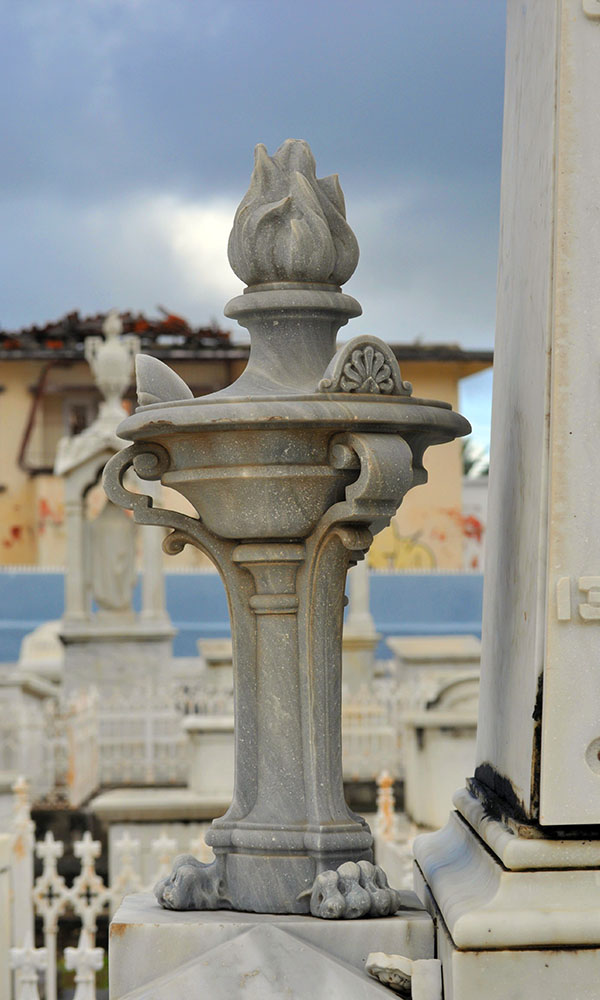
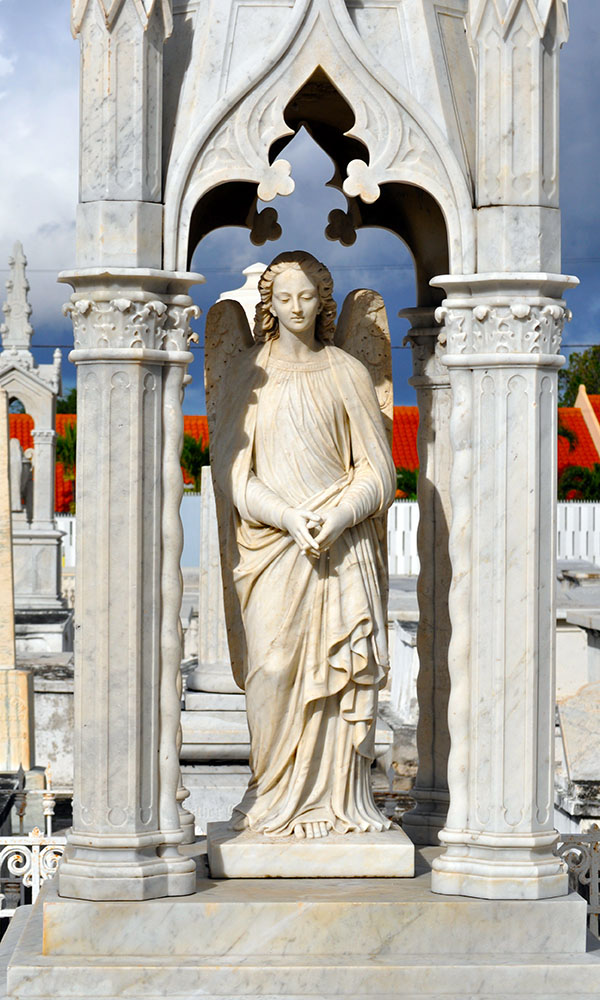
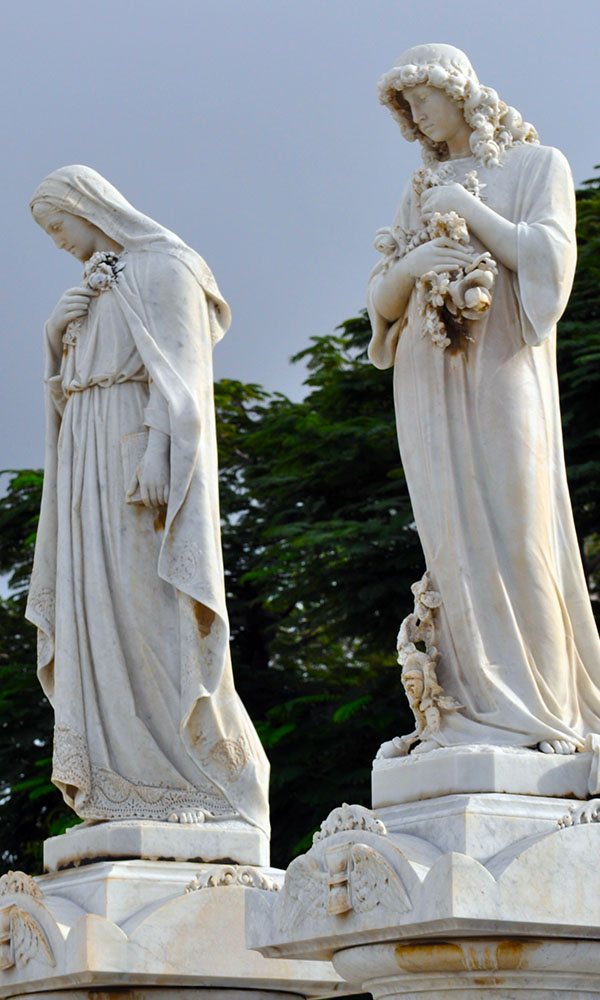
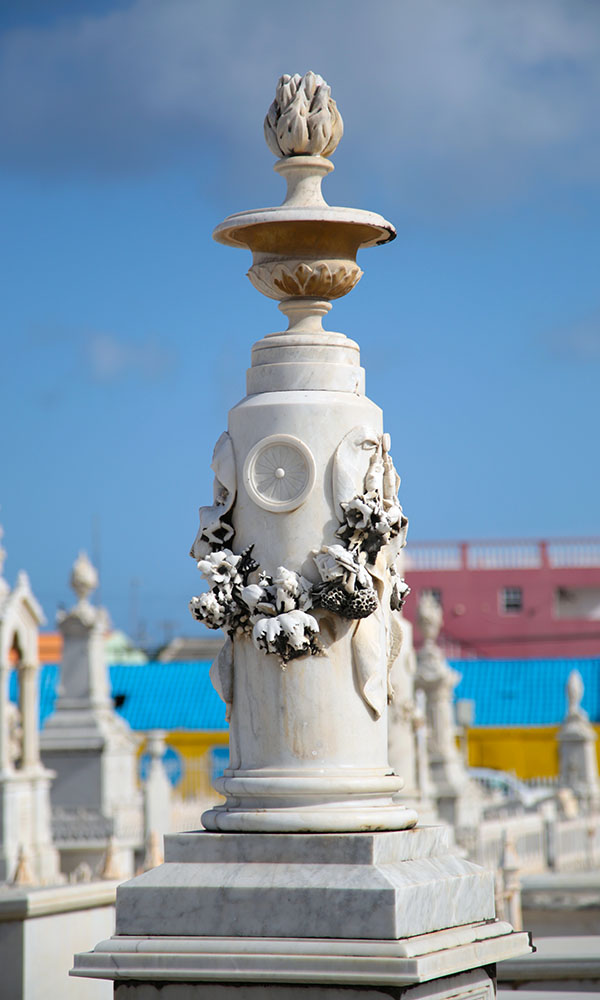
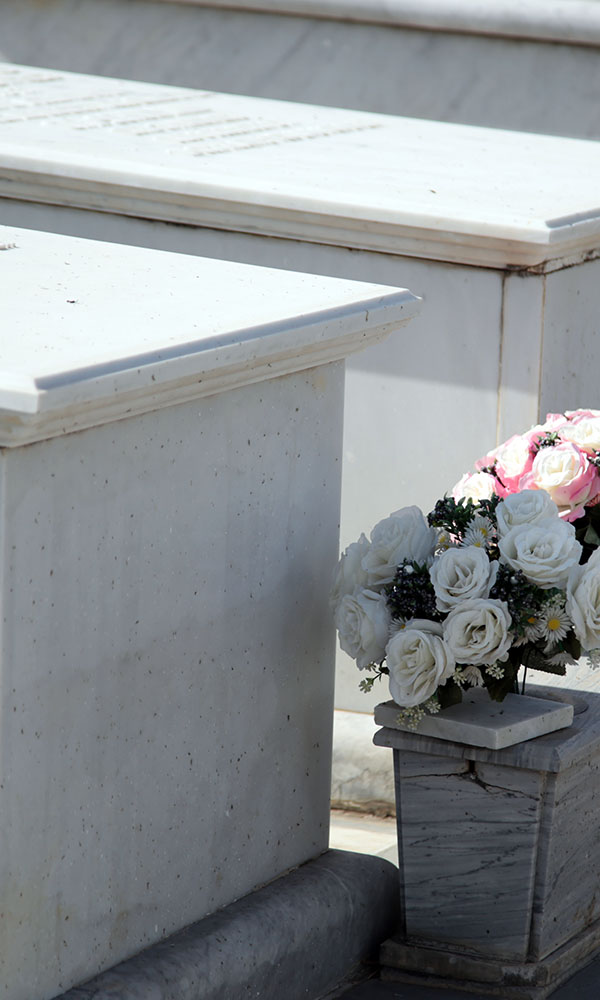
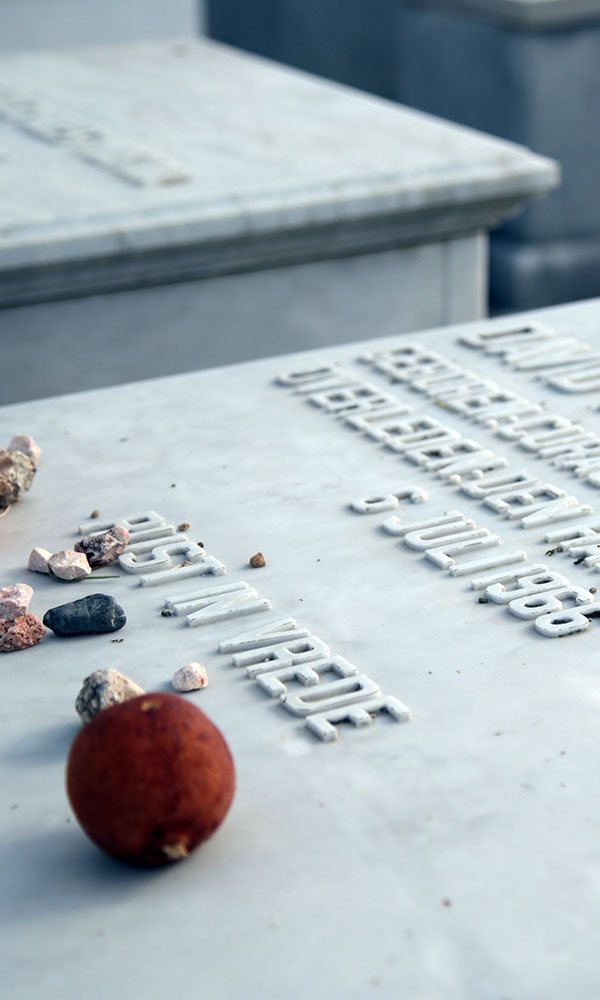
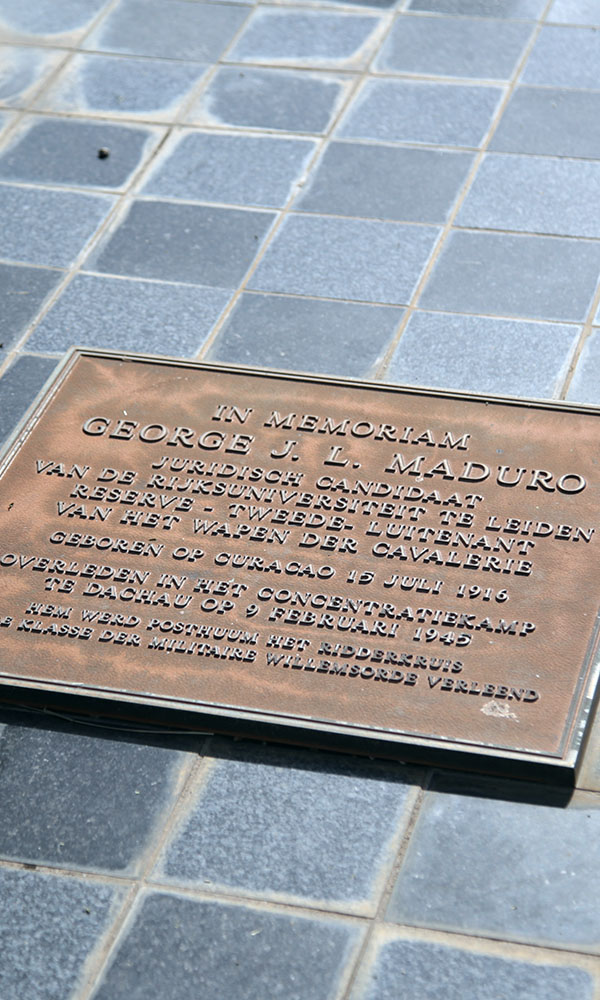
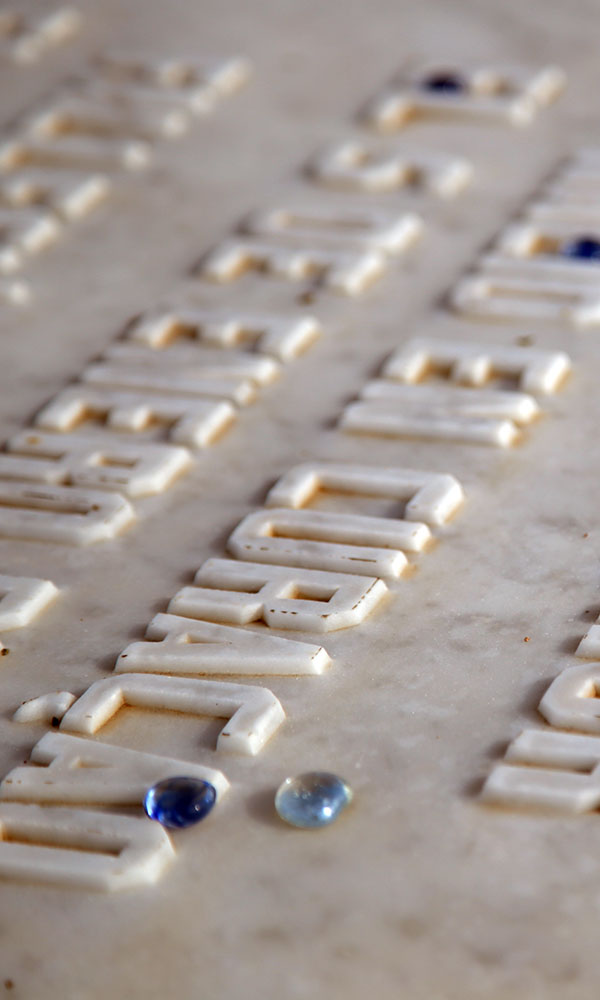
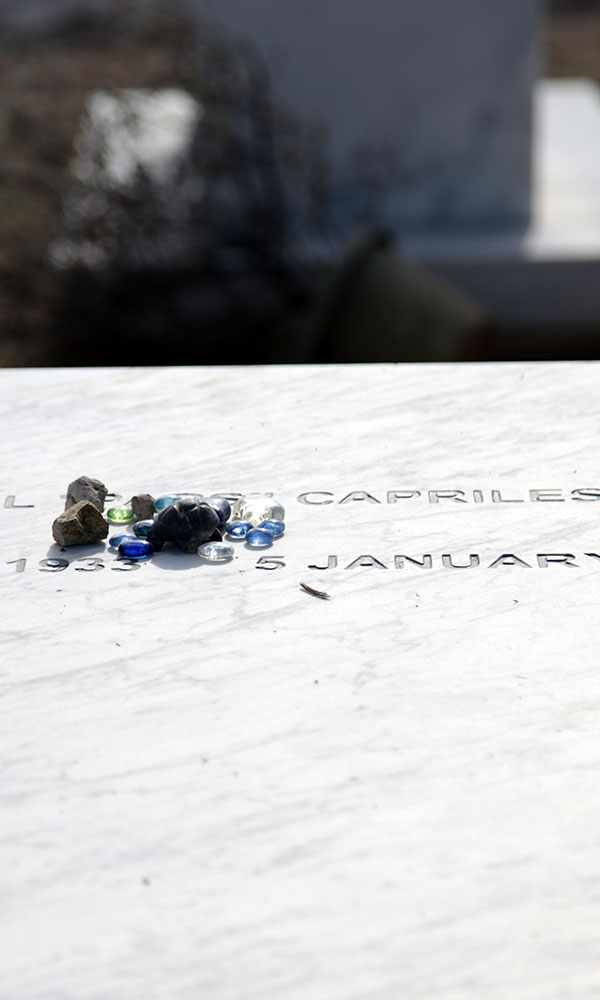
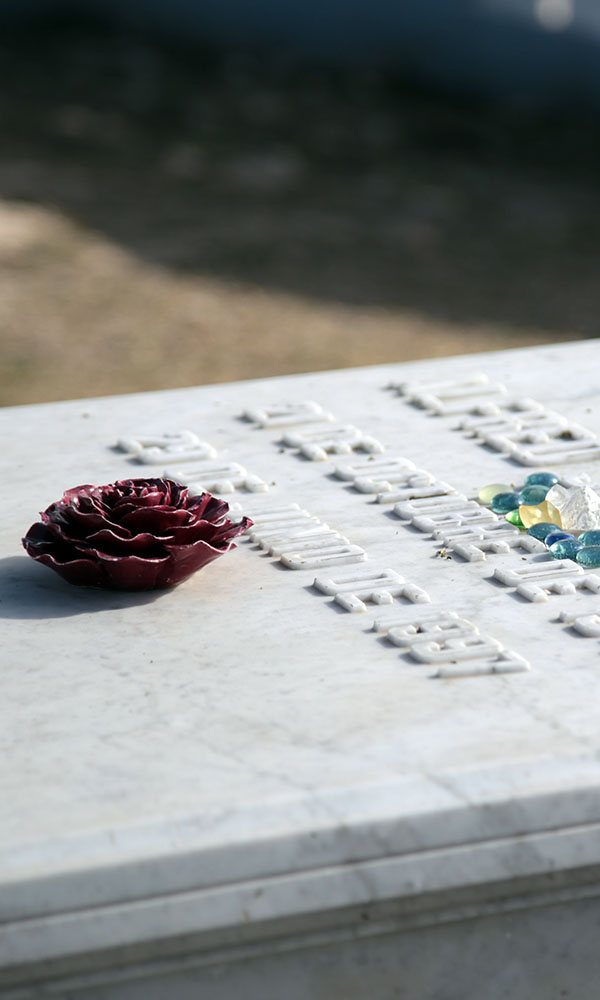
history (continued)
In the Emanu-El section of Berg Altena, one may notice elaborately decorated pillars and sepulchral monuments. Unlike the eastern section, Mikvé Israel’s plot is mostly not lavishly decorated. Many consider these ornamental monuments out of the ordinary for Jewish cemeteries. Such universal funerary art can, however, also be found in some Jewish cemeteries in Europe and even in the US. What is, however, most noteworthy is the single monument showing a bust of the person buried there: that one is against all principles of Jewish funerary art!
Ashkenazi Jews arrived in Curaçao mostly in the late 1920s and early 1930s in the aftermath of World War I and even more so in the years of foreboding anxiety and horrors of World War II. They would first form part of the social-cultural association Club Union (founded in 1930) and subsequently become members of the Shaarei Tsedek congregation (founded in 1949), often after having been members of Mikvé Israel since their arrival. Ashkenazim have all along been buried at both Beth Haim Bleinheim and at Beth Haim Berg Altena without any differentiation as to ethnic heritage. After Mikvé Israel acquired an additional plot at the Berg Altena cemetery in 1953, that new plot was designated mostly for burial of members of Shaarei Tsedek. About a third of the graves of the Shaarei Tsedek Ashkenazim at Beth Haim Berg Altena also mention a country or city of birth. The number thereof is too few to be generally representative of the Curaçao Ashkenazim, but it is interesting to note that almost one half of these show the interred to be born in Poland. Some others were born in cities and areas that today form part of the Ukraine.
Members of the Jewish community continue to be buried in Berg Altena.
Donate to help
Contact & Visit info
While entrance is free to anyone, we ask that you treat the cemetery and the deceased with respect. Please refrain from making loud noises or playing music, do not litter, do not stand on any graves, and do not desecrate the tombstones.
You may use the biographies provided to you on this website on the Virtual Tour page as a guide through the cemetery. In this case, please enter through the eastern-most gate to the right, facing the front of the cemetery which leads into the part of the cemetery that was the original cemetery of the Reform Temple Emanu-El.
For more information on Jewish Curaçao, please visit curacaojews.org.
Opening hours & Location
Hours: Sunday – Thursday 7:00 to 18:00 Friday 7:00 to 16:00
Closed on Saturdays and Jewish holidays.
